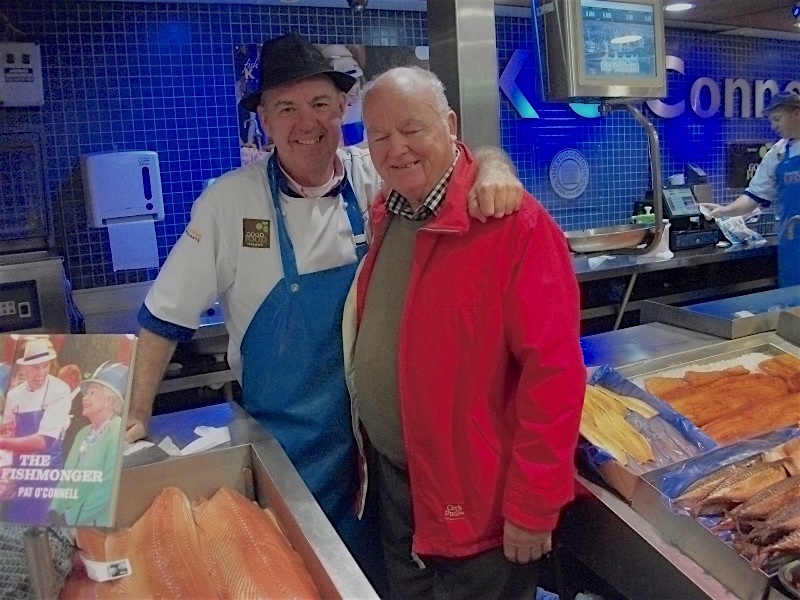The ROMEOS visited the English Market and Cork Gaol

Yes, the 26 ROMEOs, (Retired Old Men Eating Out), who ventured to Cork on Thursday 12th November ended up in the Cork Gaol and like two recent politicians, they were able to walk free after a few hours.
They travelled by train in reserved seats and on arrival were taken by the pre-arranged bus, except for five led by Harry Gallagher who walked, to the English Market. The first outlet to be visited was that of Pat O’Connell who was made famous when Queen Elizabeth visited his fish counter in May 2011. Our chief ROMEO Gerry O’Neill and the author shook hands with the hand that shook hands with Queen Elizabeth.
The English Market (An Margadh Sasanach), comprises Princes Street Market and Grand Parade Market, and is a municipal food market in the centre of the city. The market is administered by Cork City Council, is well supported locally and has become a major tourist attraction especially since it was visited by the Queen. The term English Market was coined in the 19th Century to distinguish the market from the nearby St. Peter's Market (now the site of the Bodega on Cornmarket Street), which was known as the Irish Market.
There has been a market on the present site since 1788 but the present group of buildings was constructed in the mid-19th century with the ornamental entrance at Princes Street being constructed in 1862. The market changed little over the next century or so until it was seriously damaged by fire on 19 June 1980 and had to be extensively refurbished by Cork City Council. The refurbished market suffered a second fire in 1986 but the fire was less damaging than the first.
The market is best known for its fresh fish and butchers, and it serves many of the city's top restaurants. It is a source of local specialities such as drisheen, spiced beef, and buttered eggs. There are only three outlets not selling food in the market.
On departing the Market, all retired to the nearby Clancy’s hostelry for the necessary sustenances, in both solid and liquid form. Following this very enjoyable break the ROMEOs were transported to the Cork City Gaol in Sunday’s Well.
The Gaol was designed to replace the old Gaol at the Northgate Bridge in the heart of the city. The old Gaol was nearly 100 years old on a confined site, overcrowded and unhygienic.
In 1806 an Act of Parliament was passed and monies levied locally to allow the building of the new City Gaol. The first site chosen was at distillery fields-an area prone to frequent flooding! This fact and enlightened thinking that hilly, airy sites were best for containing Gaol fever probably influenced the change to the present site. The new Cork City Gaol opened in 1824 and was reported as being “the finest in 3 kingdoms”.
In 1878, the Gaol became an all-female prison which it remained until male Anti-Treaty supporters were incarcerated in 1922/1923. The Gaol closed in August 1923 with all remaining prisoners either released or transferred to other Gaols.
The conducted tour was well organised, informative and most enjoyable. After two hours of confinement, all the ROMEOs received their release papers but not before three of the ROMEOs who had previous convictions had to be bailed out.
It was a very tired group of Retired Old Men that arrived back in Dublin.
Their final outing of 2015 will be on Friday 18th December when they will be given a conducted tour of Dublin Port followed with their Christmas lunch in Howth Yacht Club.
Photographs by the author Pat Murphy (Top: Gerry O'Neill meets Pat O'Connell)
